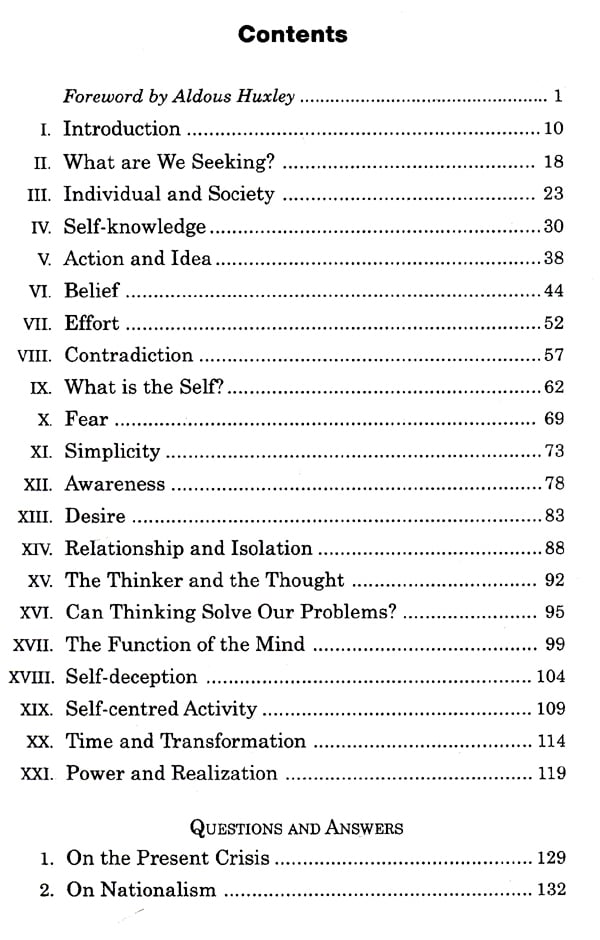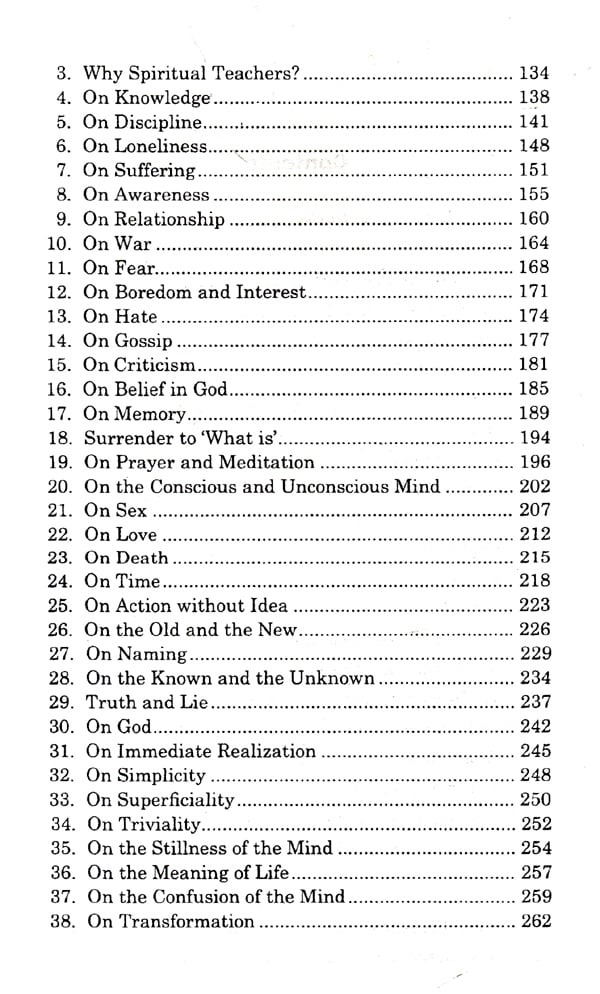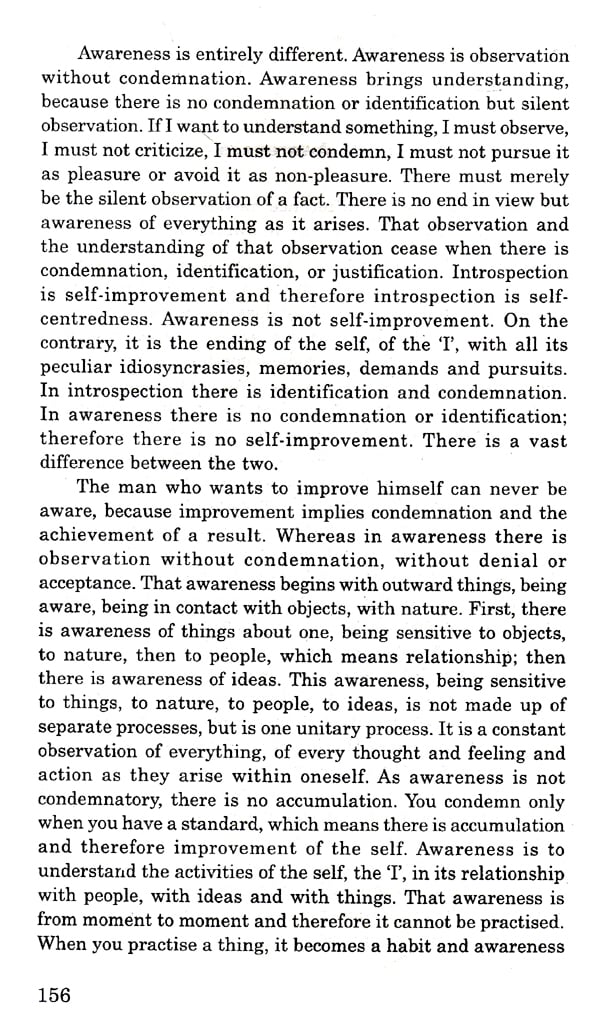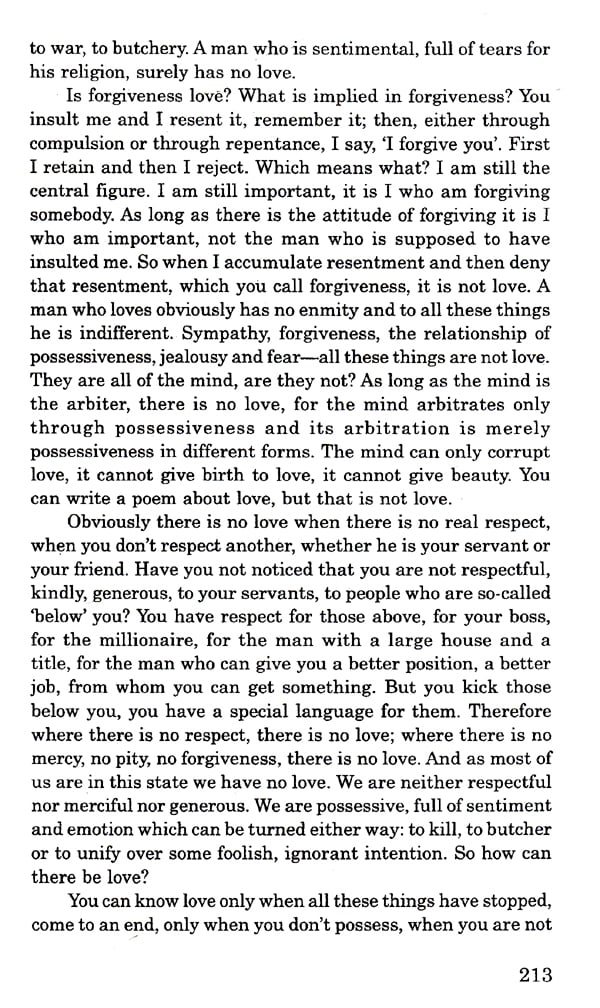
The First and Last Freedom
Book Specification
| Item Code: | NAY433 |
| Author: | J. Krishnamurti |
| Publisher: | Krishnamuriti Foundation India |
| Language: | English |
| Edition: | 2019 |
| ISBN: | 9788187326250 |
| Pages: | 268 |
| Cover: | PAPERBACK |
| Other Details | 8.50 X 5.50 inch |
| Weight | 300 gm |
Book Description
THE FIRST AND LAST FREEDOM was first brought out in 1954 by a British publisher in response to demands from all over the world for a comprehensive book on J. Krishnamurti's teachings. The value of the book was enhanced with Aldous Huxley writing a masterly Foreword, in which he says: 'In this volume of selections from the writings and recorded talks of Krishnamurti, the reader will find a clear contemporary statement of the fundamental human problem, together with an invitation to solve it in the only way in which it can be solved-for and by himself.'
The book falls into two parts: Krishnamurti's reflections on life, and answers to questions put to him by his audiences. It covers a wide range of themes, from boredom and gossip to self-knowledge and God, and thus provides a good starting point for those wishing to familiarize themselves with his teachings.
J. Krishnamurti (1895 - 1986) is regarded as one of the greatest philosophers and religious teachers of all time. For more than sixty years he travelled the world over, giving talks and holding dialogues, not as a guru but as a friend. His teachings are not based on book knowledge and theories and therefore communicate directly to anyone seeking answers to the present world crisis as well as to the eternal 'problems of human existence.
MAN is AN amphibian who lives simultaneously in two worlds-the given and the home-made, the world of matter, life and consciousness and the world of symbols. In our thinking we make use of a great variety of symbol-systems-linguistic, mathematical, pictorial, musical, ritualistic. Without such symbol-systems we should have no art, no science, no law, no philosophy, not so much as the rudiments of civilization: in other words, we should be animals.
Symbols, then, are indispensable. But symbols-as the history of our own and every other age makes so abundantly clear-can also be fatal. Consider, for example, the domain of science on the one hand, the domain of politics and religion on the other. Thinking in terms of, and acting in response to, one set of symbols, we have come, in some small measure, to understand and control the elementary forces of nature. Thinking in terms of, and acting in response to, another set of symbols, we use these forces as instruments of mass murder and collective suicide. In the first case the explanatory symbols were well-chosen, carefully analysed and progressively adapted to the emergent facts of physical existence. In the second case symbols originally ill-chosen were never subject-ed to thorough-going analysis and never reformulated so as to harmonize with the emergent facts of human existence. Worse still, these misleading symbols were everywhere treated with a wholly unwarranted respect, as though, in some mysterious way, they were more real than the realities to which they referred. In the contexts of religion and politics, words are not regarded as standing, rather inadequately, for things and events; on the contrary, things and events are regarded as particular illustrations of words.
Up to the present symbols have been used realistically only in those fields which we do not feel to be supremely important.
**Contents and Sample Pages**













